Health Care > QUESTIONS & ANSWERS > Gerontologic Nursing 6th Edition Meiner Test Bank (All 29 Chapters) (All)
Gerontologic Nursing 6th Edition Meiner Test Bank (All 29 Chapters)
Document Content and Description Below
Gerontologic Nursing 6th Edition Meiner Test Bank (All 29 Chapters) Chapter 01: Overview of Gerontologic Nursing Meiner: Gerontologic Nursing, 5th Editio n MULTIPLE CHOICE 1. In 2010, the revised Stan... dards and Scope of Gerontological Nursing Practice was published. The nurse would use these standards to: a. promote the practice of gerontologic nursing within the acute care setting. b. define the concepts and dimensions of gerontologic nursing practice. c. elevate the practice of gerontologic nursing. d. incorporate suggested interventions from others who practice gerontologic nursing. ANS: D The current publishing of the Standards and Scope of Gerontological Nursing Practice in 2010 incorporates the input of gerontologic nurses from across the United States. It was not intended to promote gerontologic nursing practice within acute care settings, define concepts or dimensions of gerontologic nursing practice, or elevate the practice of gerontologic nursing. DIF: Remembering (Knowledge) REF: Page 2 OBJ: 1-1 TOP: N/A MSC: Safe and Effective Care Environment 2. When attempting to minimize the effect of ageism on the practice of nursing older adults, a nurse needs to first: a. recognize that nurses must act as advocates for aging patients. b. accept that this population represents a substantial portion of those requiring nursing care. c. self-reflect and formulate one’s personal view of aging and the older patient. d. recognize ageism as a form of bigotry shared by many Americans. ANS: C Ageism is an ever-increasing prejudicial view of the effects of the aging process and of the older population as a whole. With nurses being members of a society holding such views, it is critical that the individual nurse self-reflect on personal feelings and determine whether such feelings will affect the nursing care that he or she provides to the aging patient. Acting as an advocate is an important nursing role in all settings. Simply accepting a fact does not help end ageism, nor does recognizing ageism as a form of bigotry. DIF: Applying (Application) REF: N/A OBJ: 1-9 TOP: Teaching-Learning MSC: Safe and Effective Care Environment 3. When discussing factors that have helped to increase the number of healthy, independent older Americans, the nurse includes the importance of: a. increased availability of in-home care services. b. government support of retired citizens. c. effective antibiotic therapies. d. the development of life-extending therapies. ANS: C The health and ultimate autonomy of older Americans has been positively impacted by the development of antibiotics, better sanitation, and vaccines. These public health measures have been more instrumental in increasing the numbers of healthy, independent older Americans than have in-home care services, government programs, or life-extending therapies. DIF: Remembering (Knowledge) REF: Page 2 OBJ: 3-3 TOP: Nursing Process: Implementation MSC: Health Promotion and Maintenance 4. Based on current data, when presenting an older adult’s discharge teaching plan, the nurse includes the patient’s: a. nonrelated caretaker. b. paid caregiver. c. family member. d. intuitional representative. ANS: C Less than 4% of older adults live in a formal health care environment. The majority of the geriatric population lives at home or with family members. DIF: Applying (Application) REF: N/A OBJ: 3-3 TOP: Nursing Process: Planning MSC: Safe and Effective Care Environment 5. The nurse planning care for an older adult who has recently been diagnosed with rheumatoid arthritis views the priority criterion for continued independence to be the patient’s: a. age. b. financial status. c. gender. d. functional status. ANS: D Maintaining the functional status of older adults may avert the onset of physical frailty and cognitive impairment, two conditions that increase the likelihood of institutionalization. DIF: Remembering (Knowledge) REF: Page 8 OBJ: 1-6 TOP: Nursing Process: Planning MSC: Physiologic Integrity 6. A nurse working with the older adult population is most likely to assess a need for a financial social service’s referral for a(n): a. white male. b. black female. c. Hispanic male. d. Asian American female. ANS: B The poverty rate among older black women is substantially higher than that seen among males or females of other ethnic groups. White males had the least poverty. DIF: Applying (Application) REF: N/A OBJ: 1-4 TOP: Nursing Process: Assessment MSC: Safe and Effective Care Environment 7. Which of the following statements made by a nurse preparing to complete a health assessment and history on an older patient reflects an understanding of the general health status of this population? a. “I’ll need to document well regarding the medications the patient is currently prescribed.” b. “I would like to understand how supportive the patient’s family members are.” c. “Most older patients are being treated for a variety of chronic health care issues.” d. “It will be interesting to see whether this patient sees herself as being healthy.” ANS: D It is a misconception that old age is synonymous with disease and illness. The nurse should always determine the patient’s sense of wellness and independence when conducting a health and history assessment. An assessment of medication use and family support is important for any patient. Many older adults do have chronic health conditions, but their perception is more important than a single number. DIF: Applying (Application) REF: N/A OBJ: 1-4 TOP: Nursing Process: Assessment MSC: Health Promotion 8. The nurse is caring for an older adult who has been admitted to an acute care hospital for treatment of a fractured femur. The family expresses concern about the patient’s pending transfer to a subacute care facility. What response by the nurse is best? a. “Acute care facilities lack the long-term physical therapy support your dad requires.” b. “Your dad will be much happier in a more serene, private environment.” c. “The subacute facility will focus on helping your dad maintain his independence.” d. “Insurance, including Medicare, will cover only a limited amount of time here.” ANS: C The transfer of the patient to a subacute facility is based on the need to maintain the patient’s level of function and independence, a task the acute care facility is not prepared to address once the patient is physiologically stable. The patient may or may not be happier in the new setting; the nurse should not make this judgment. It is true that insurance only pays for a limited amount of time in an acute care facility, but this is not the best reason for the patient to transfer. DIF: Applying (Application) REF: N/A OBJ: 1-6 TOP: Communication and Documentation MSC: Health Promotion and Maintenance 9. To best assure both the quality of care and the safety of the older adult patient who requires in-home unlicensed assistive personal (UAP) assistance, the geriatric nurse: a. evaluates the competency of the UAP staff. b. assumes the roles of case manager and patient advocate. c. arranges for the needed UAP provided services. d. assesses the patient for functional limitations. ANS: A As more care traditionally provided by professional nurses is being transferred to UAP, the nurse must assume more responsibility for educating, training, and evaluating the competency of UAP staff to provide safe, effective care for the older adult patient. DIF: Applying (Application) REF: N/A OBJ: 1-2 TOP: Communication and Documentation MSC: Safe and Effective Care Environment 10. The nurse working with older adults understands what information about certification in gerontologic nursing? a. It is mandatory for those in long-term care settings. b. It is voluntary and shows clinical expertise in an area. c. It allows nurses to be paid by third-party payers. d. It allows nurses to advance their careers in a job. ANS: B Certification is voluntary and shows that a nurse has additional knowledge and expertise in a certain area of practice. It is not mandatory in specific care settings. It does not allow for third-party reimbursement. It may be part of a career ladder program, but that is not true of all work settings. DIF: Remembering (Knowledge) REF: Page 2 OBJ: 1-2 TOP: Teaching-Learning MSC: Safe Effective Care Environment 11. A nurse works in a gerontologic clinic. What action by the nurse takes highest priority? a. Serving as a patient advocate b. Educating patients about diseases c. Helping patients remain independent d. Referring patients to home health care ANS: C One of the challenges and priorities of the gerontologic nurse is helping patients maintain their independence. DIF: Remembering (Knowledge) REF: Page 10 OBJ: 1-2 TOP: Nursing Process: Implementation MSC: Health Promotion 12. A nurse is caring for an older patient in the emergency department. What information about the patient will be most helpful in creating a plan of care? a. Baseline physical and cognitive functioning b. Living conditions and family support c. Medications and current medical problems d. Results of the Mini Mental State examination ANS: A The nurse is encouraged to view older patients as individuals and consider their baseline physical and cognitive functional status as a standard by which to compare the patient’s current status. The other information is also important, but the basis of individualized care begins with the patient’s strengths and weaknesses. DIF: Applying (Application) REF: N/A OBJ: 1-6 TOP: Nursing Process: Assessment MSC: Health Promotion 13. The faculty member explains to students that many older Americans continue to work past the “retirement age.” What best explains this trend? a. Feeling healthier longer b. Changing financial outlook c. Becoming bored in retirement d. A desire to give back ANS: B As financial situations may have declined as a result of many economic factors, more older adults work past their “retirement age.” The other options may be reasons for some to continue working, but financial necessity is the reason the majority continue to do so. DIF: Remembering (Knowledge) REF: Page 7 OBJ: 1-3 TOP: Teaching-Learning MSC: Health Promotion 14. What information does the faculty member teach students about Medicare? a. Covers anyone with end stage renal disease b. Part A covers some prescription costs c. Part B covers inpatient hospital costs d. Part D eliminates the drug “donut hole” ANS: A Although Medicare is primarily for those over the age of 65, it does cover people of any age with end-stage kidney disease. Part A covers hospital costs. Part B is medical insurance. The “donut hole“ was fixed by the Affordable Care Act. DIF: Understanding (Comprehension) REF: Page 9 OBJ: 1-3 TOP: Teaching-Learning MSC: Health Promotion 15. A nursing manager notes that many older patients are admitted to the nursing unit for acute problems. What action can the manager take to most benefit this population? a. Provide mandatory education on the needs of the older patient. b. Provide restorative therapy programs designed for this group. c. Ensure staffing numbers are adequate for dependent patients. d. Encourage all nurses to obtain gerontologic certification. ANS: B Many older adults need acute care for sudden illness and injury but live in a state of functional decline, which could possibly be prevented by establishing a restorative therapy program. The other actions will help the older patients cared for in the unit, but only to limited degrees. DIF: Applying (Application) REF: N/A OBJ: 1-4 TOP: Nursing Process: Implementation MSC: Physiologic Integrity: Reduction of Risk Potential 16. The dean of a new nursing program wishes to ensure graduates are prepared to care for older patients. What document should guide the dean in designing the curriculum? a. The Nurse Practice Act for that state b. The American Nurses Association (ANA) code of ethics for nurses c. Healthy People 2020 d. The Recommended Baccalaureate Competencies and Curricular Guidelines ANS: D The Recommended Baccalaureate Competencies and Curricular Guidelines for the Nursing Care of Older Adults is an updated version of The Essentials of Baccalaureate Education for Professional Nursing Practice. This document was first published by the American Association of Colleges of Nursing (AACN) in 2008 and was updated in 2010. The other three documents do not have information about curricular requirements to prepare students to care for the older population. DIF: Applying (Application) REF: N/A OBJ: 1-2 TOP: Teaching-Learning MSC: Health Promotion 17. A nurse wants to plan a community event at a retirement center. What topic would most likely be best received? a. Heart healthy living b. Financial planning c. Avoiding scams d. Ethnic cooking classes ANS: A Older adults are demanding more programs and services aimed at health maintenance and promotion and disease and disability prevention. Based on this information, the heart healthy living presentation would be best received. DIF: Applying (Application) REF: N/A OBJ: 1-3 TOP: Teaching-Learning MSC: Health Promotion 18. What does the bedside nurse understand about his or her role in nursing research? a. Research is only done by doctorally prepared nurses. b. All nurses have a role in delivering research-based care. c. A bedside nurse can be part of a hospital research team. d. The bedside nurse can collect data if the nurse has been properly trained. ANS: B All nurses are charged to deliver patient-centered care based on evidence-based practice, research, quality improvement, and informatics. The bedside nurse is part of an interdisciplinary team that is responsible for redesigning the health care structure of the future. DIF: Understanding (Comprehension) REF: Page 13 TOP: Teaching-Learning MSC: Safe Effective Care Environment: Management of Care MULTIPLE RESPONSE 1. The clinic nurse caring for an older diabetic patient with a sixth grade education anticipates that the patient may experience difficulty (Select all that apply.) a. recognizing the importance of keeping clinic appointments. b. following a low-carbohydrate diet. c. paying for insulin and syringes. d. deciding on a primary health care provider. e. naming a health care surrogate. ANS: A, B, C Even though the educational level of the older population has steadily increased, as a population they are less educated than the general population. This deficiency can account for a lack of understanding regarding the need for medical care and the importance of following a treatment plan. Preview 6 out of 209 pages [Show More]
Last updated: 1 year ago
Preview 1 out of 209 pages
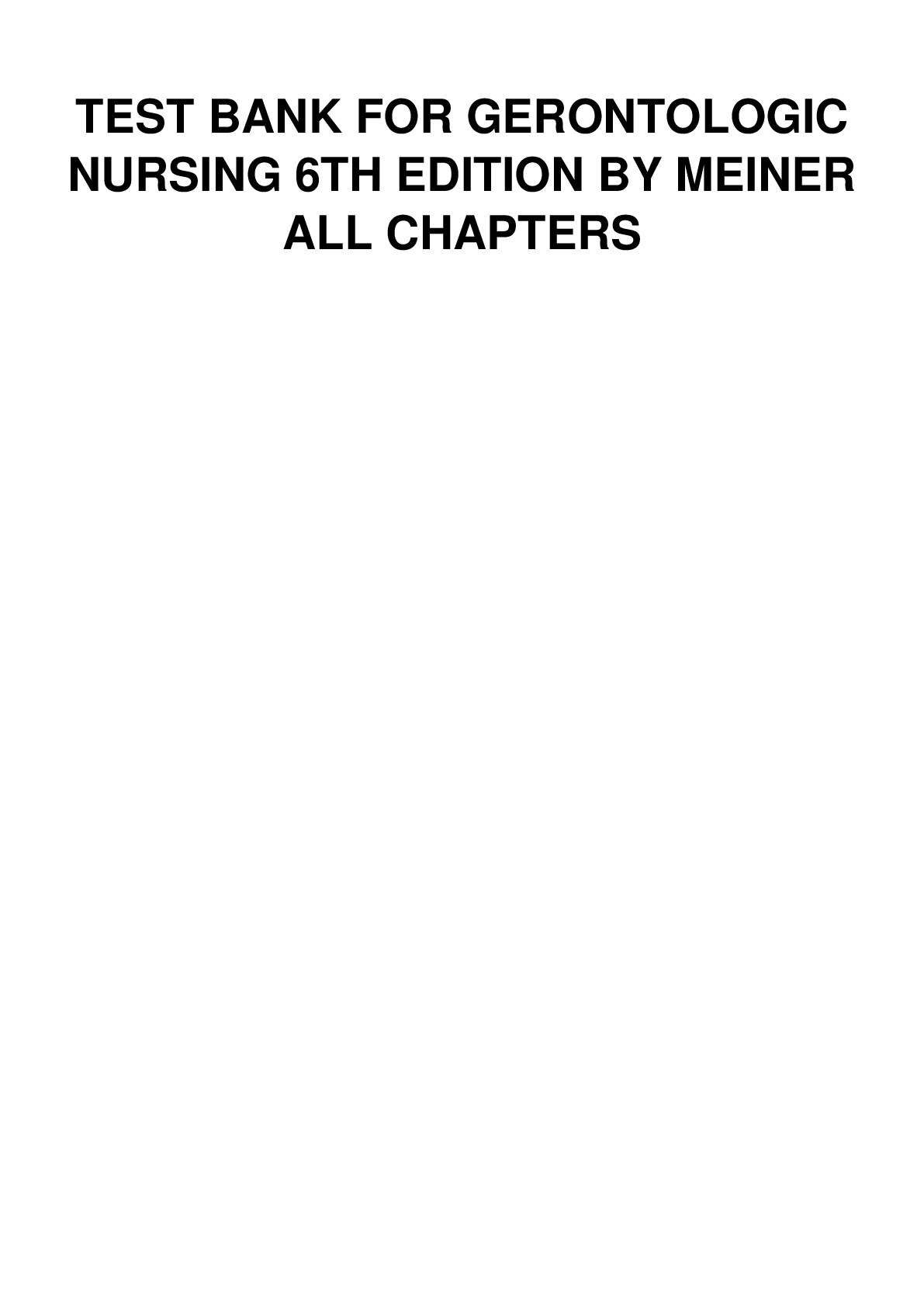
Reviews( 0 )
Document information
Connected school, study & course
About the document
Uploaded On
Aug 15, 2022
Number of pages
209
Written in
Additional information
This document has been written for:
Uploaded
Aug 15, 2022
Downloads
0
Views
25

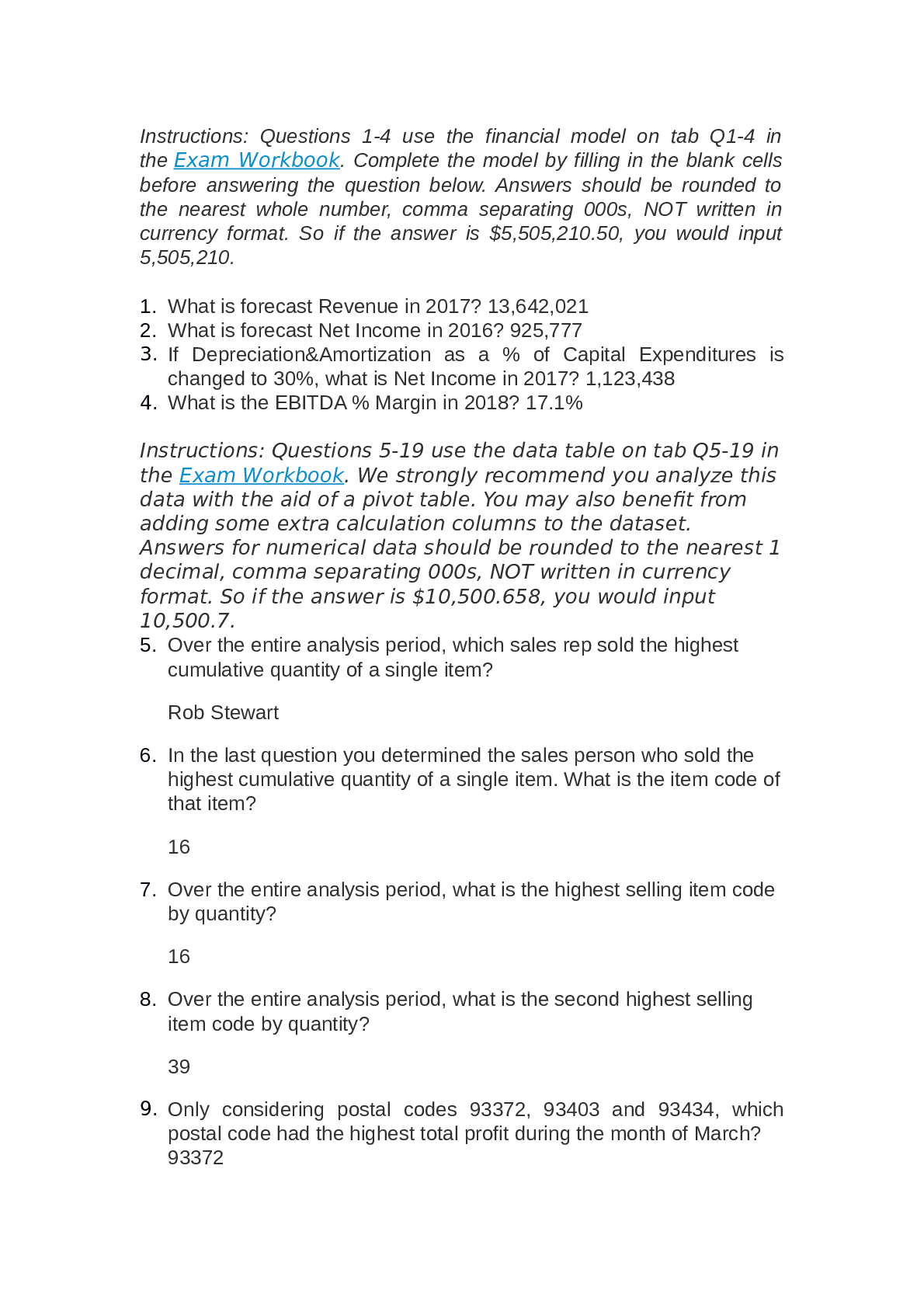
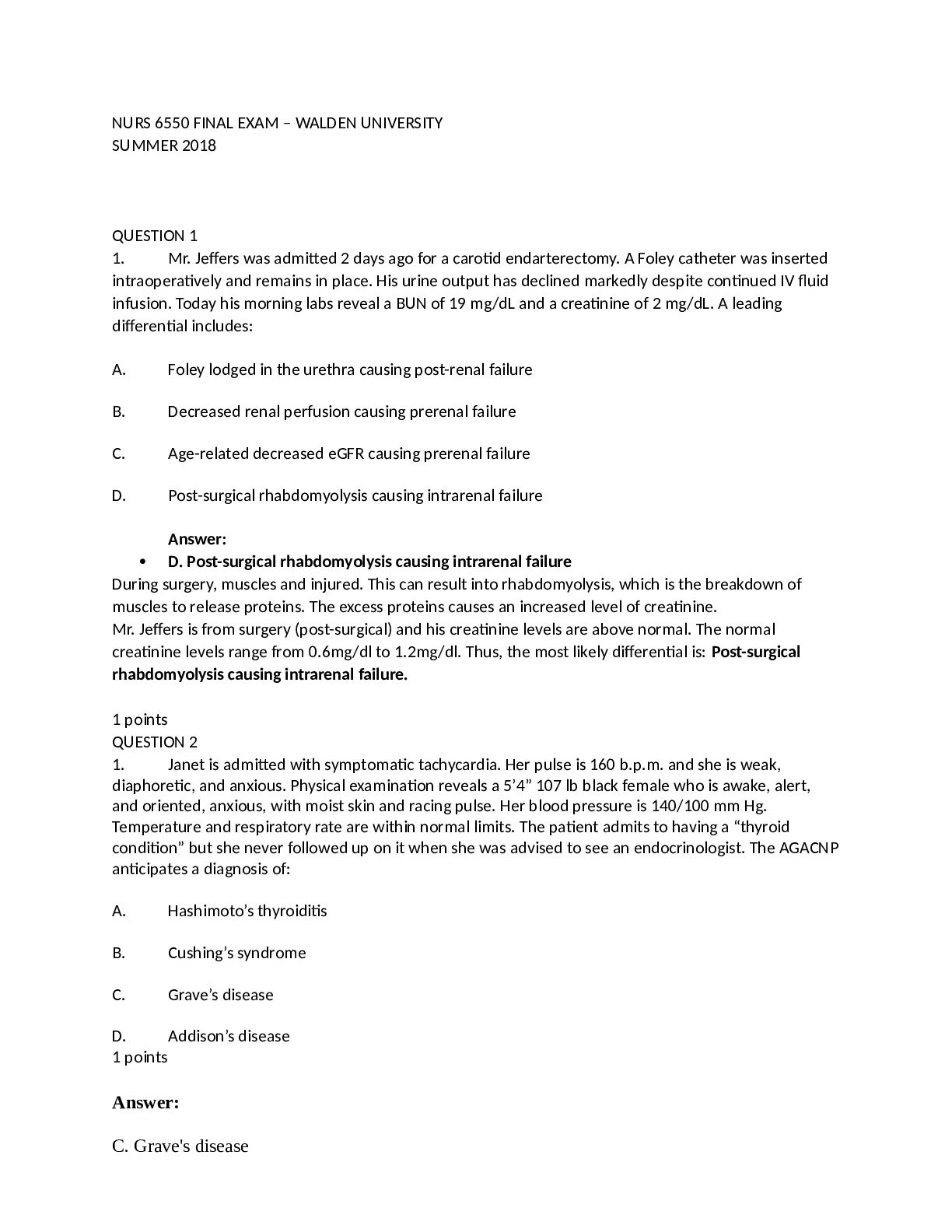
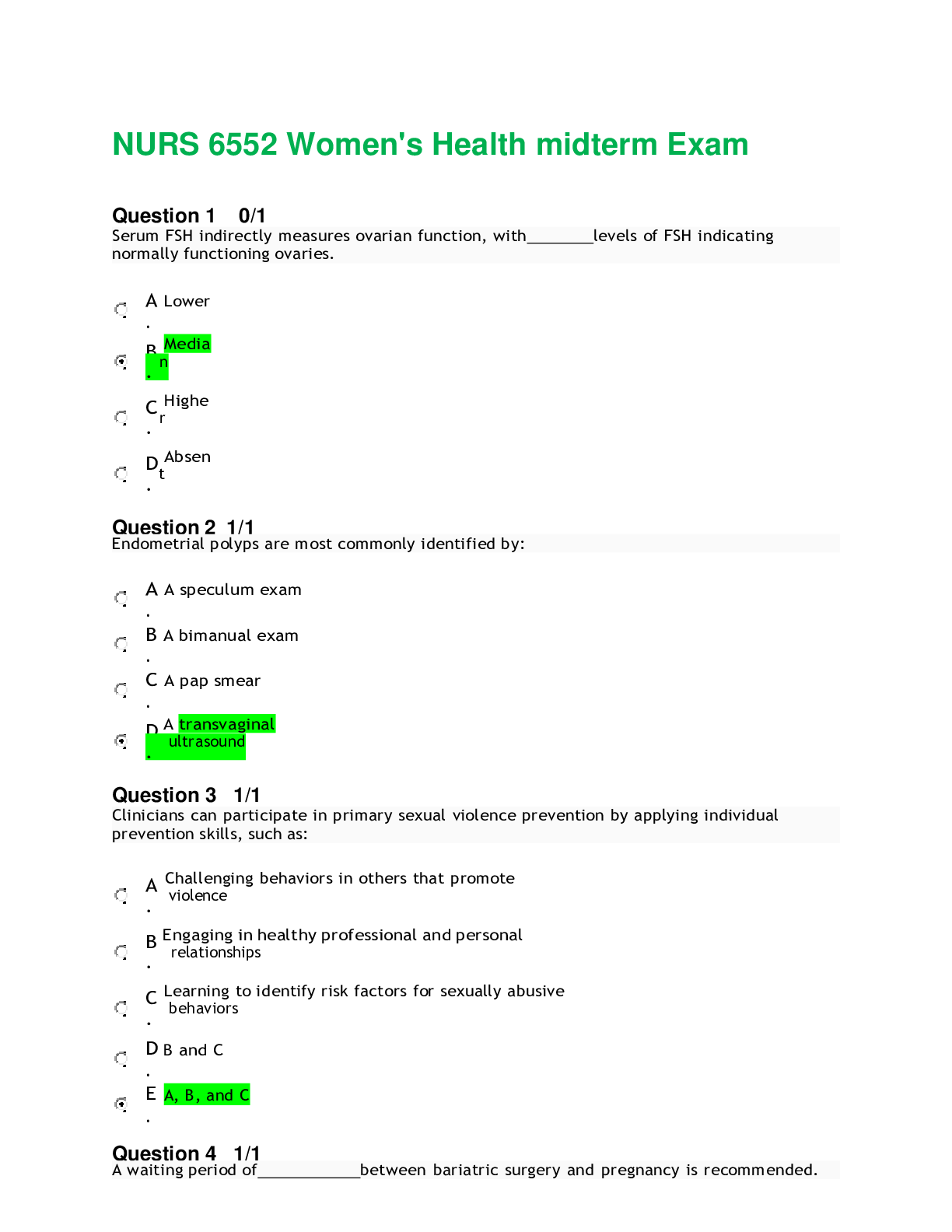
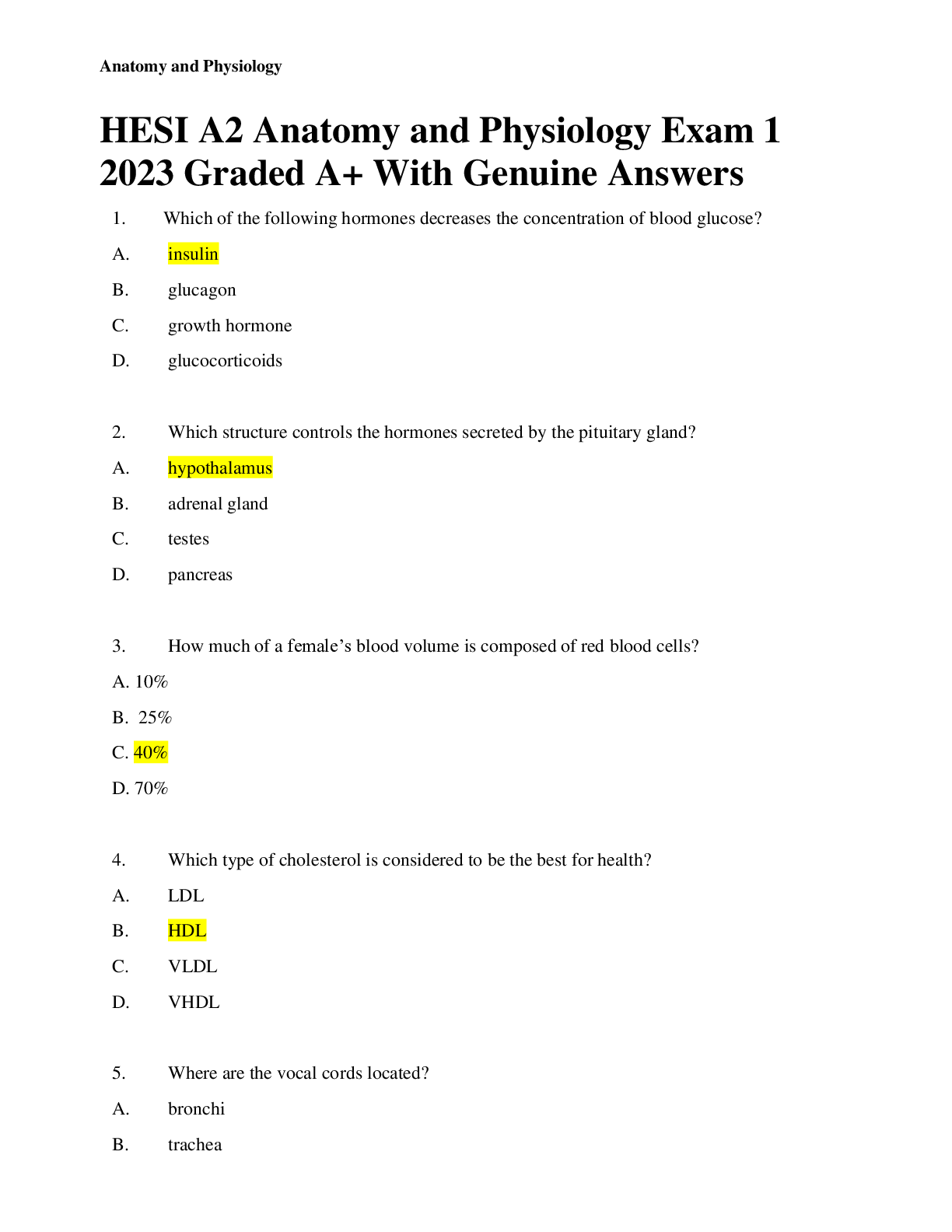
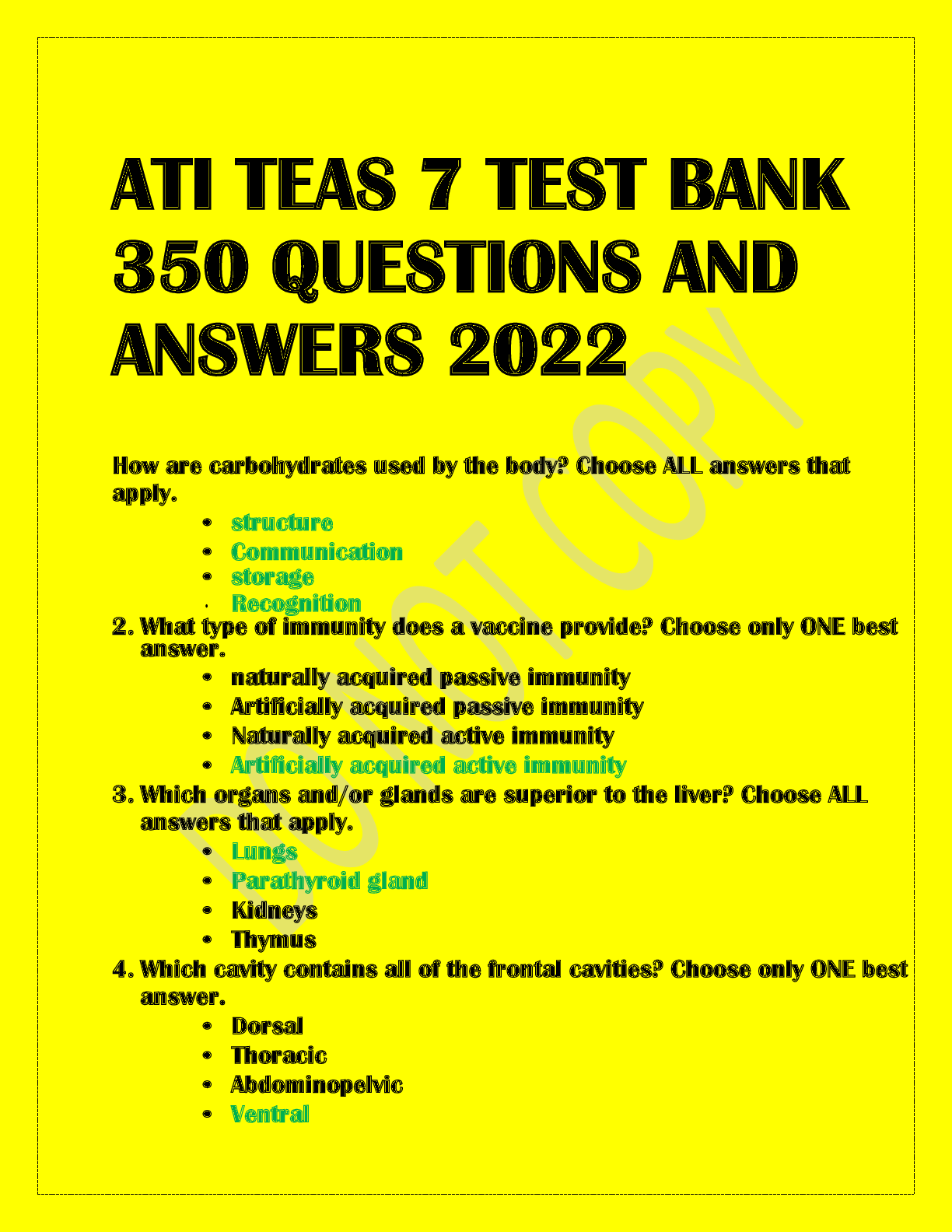
pdf (1).png)
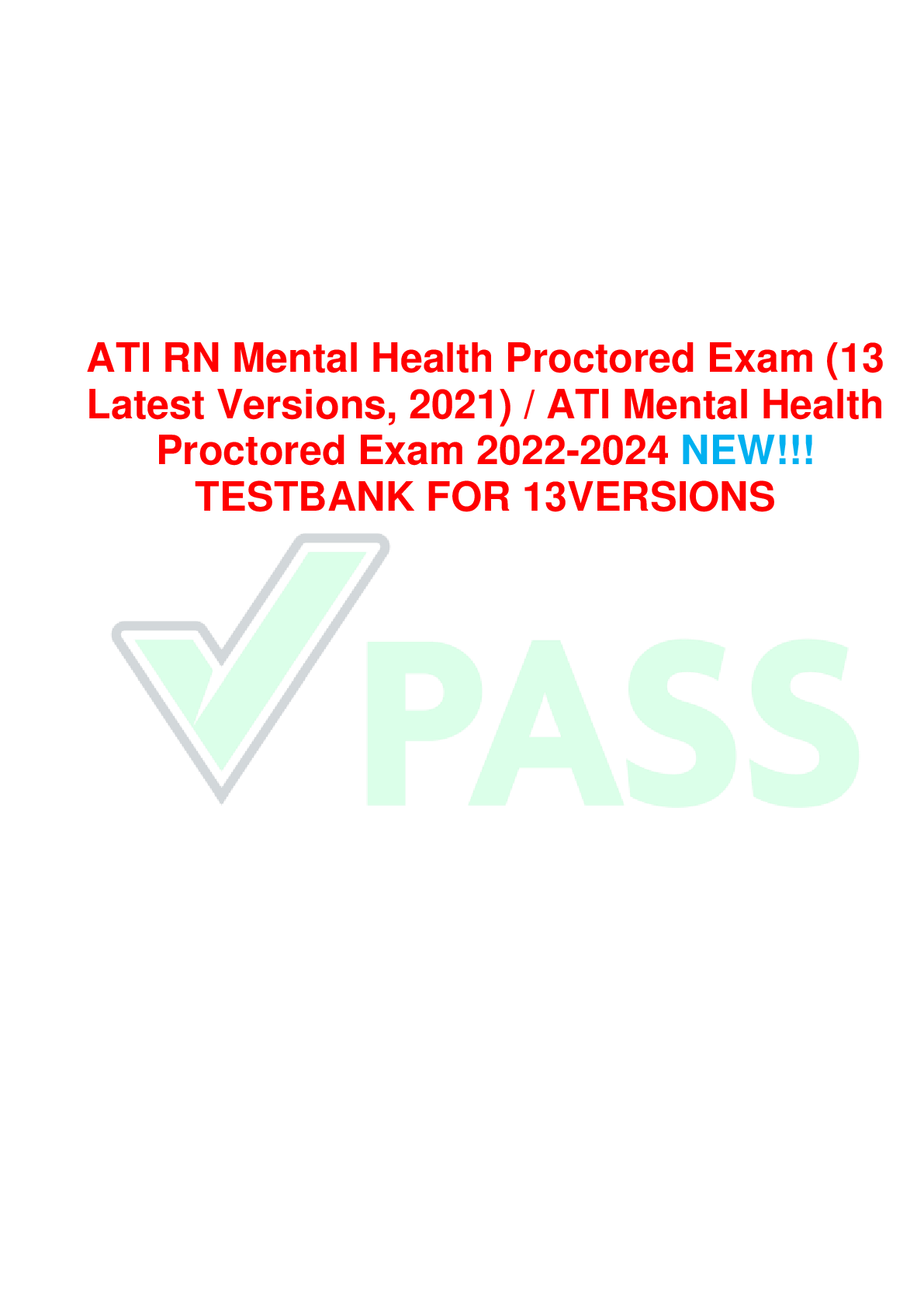
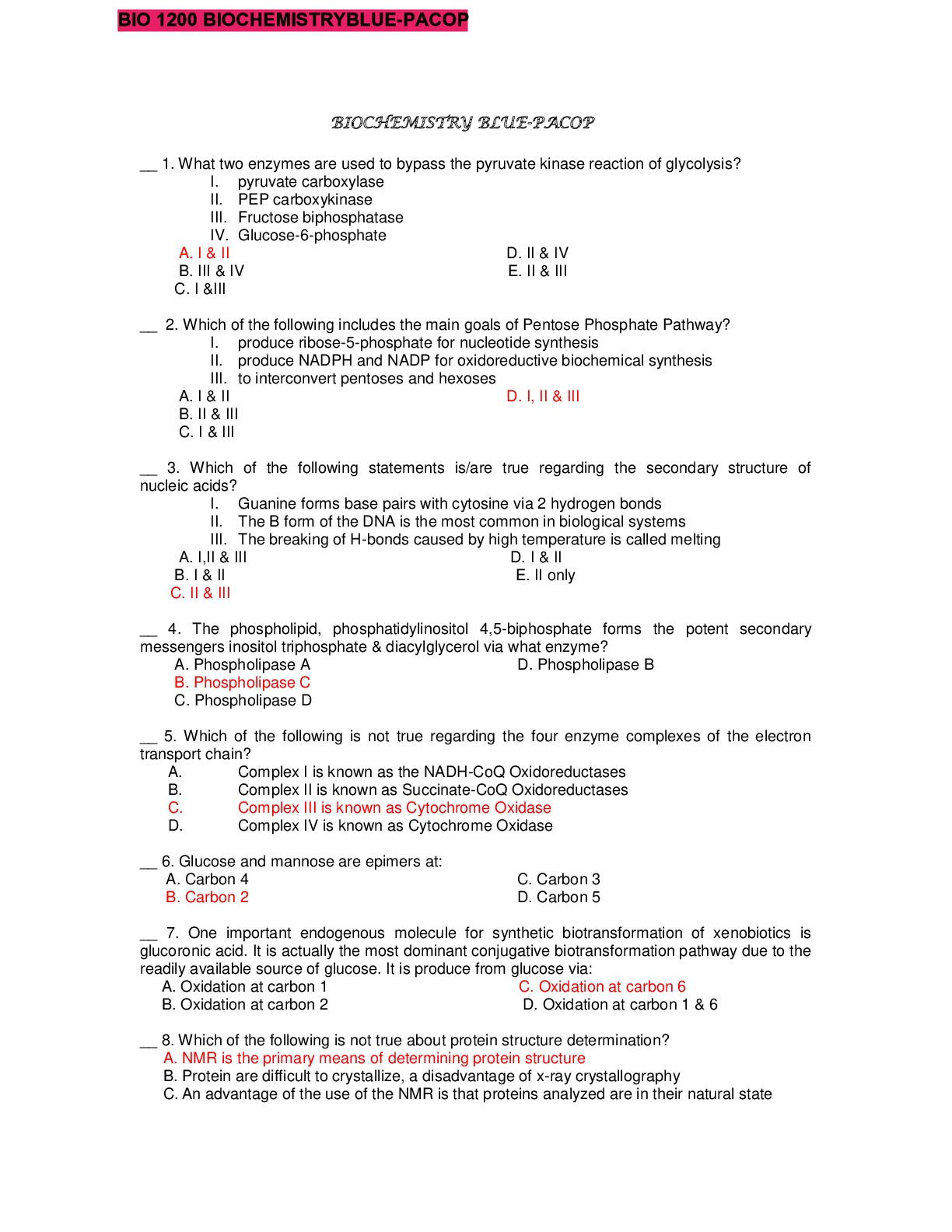
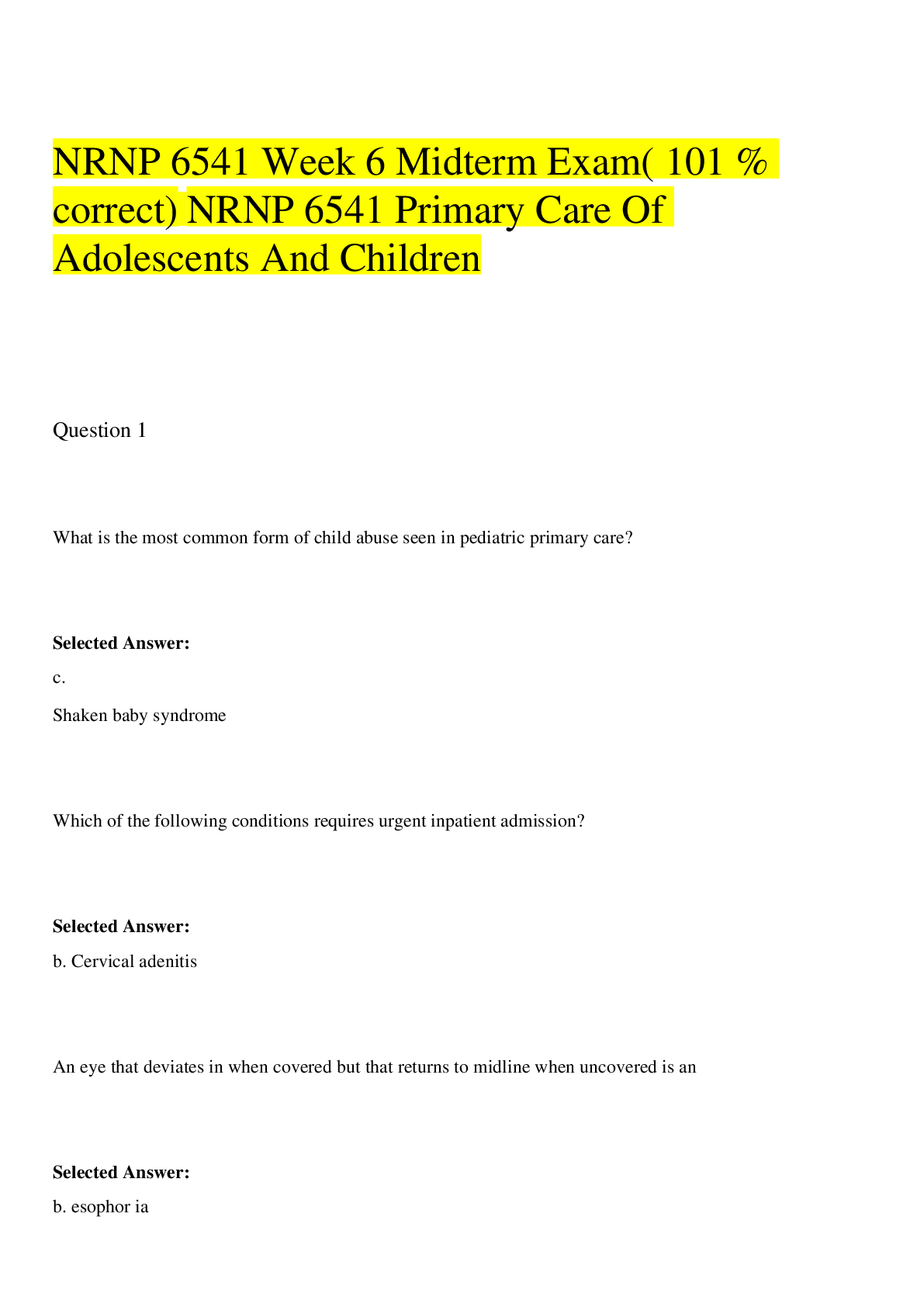

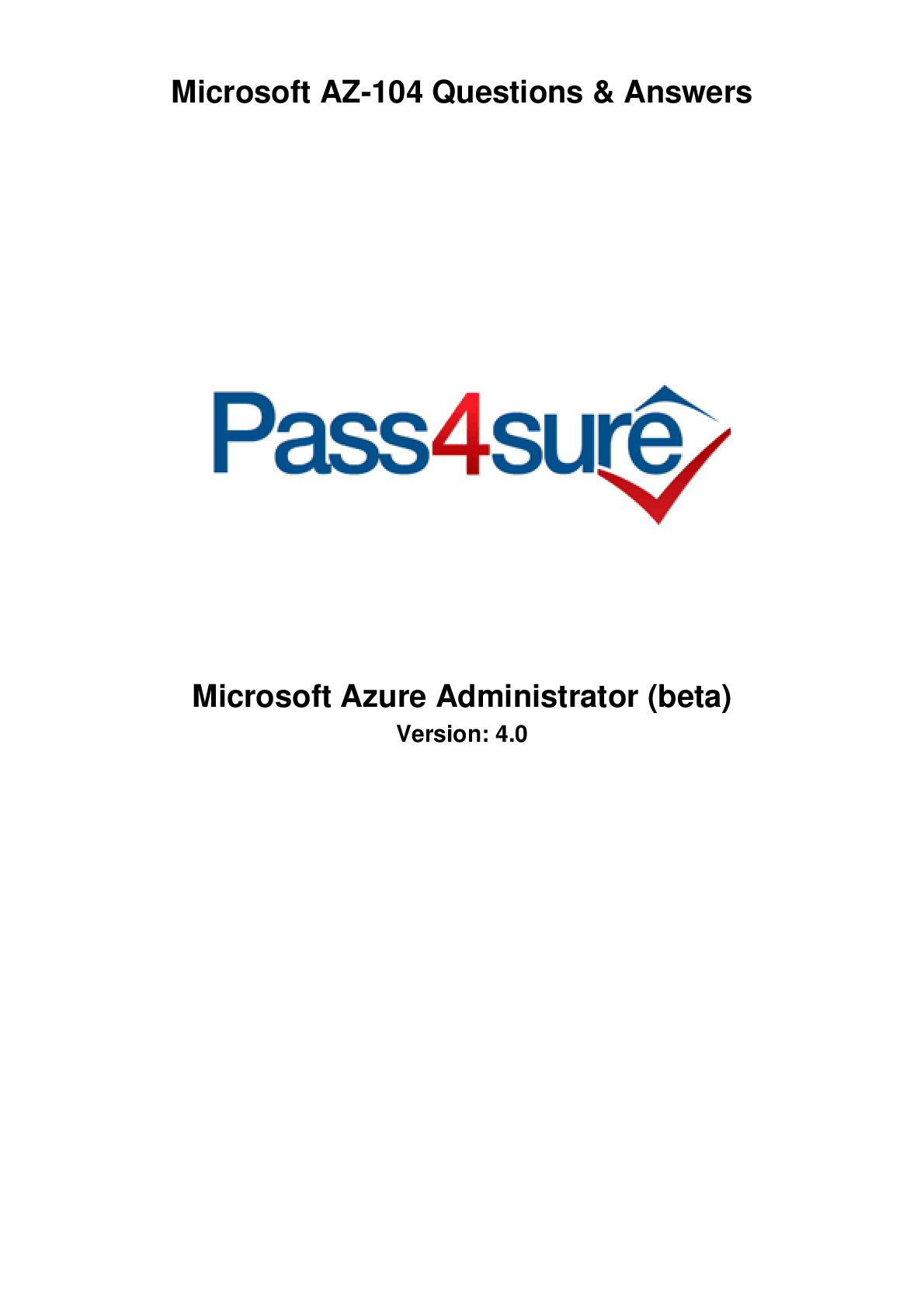
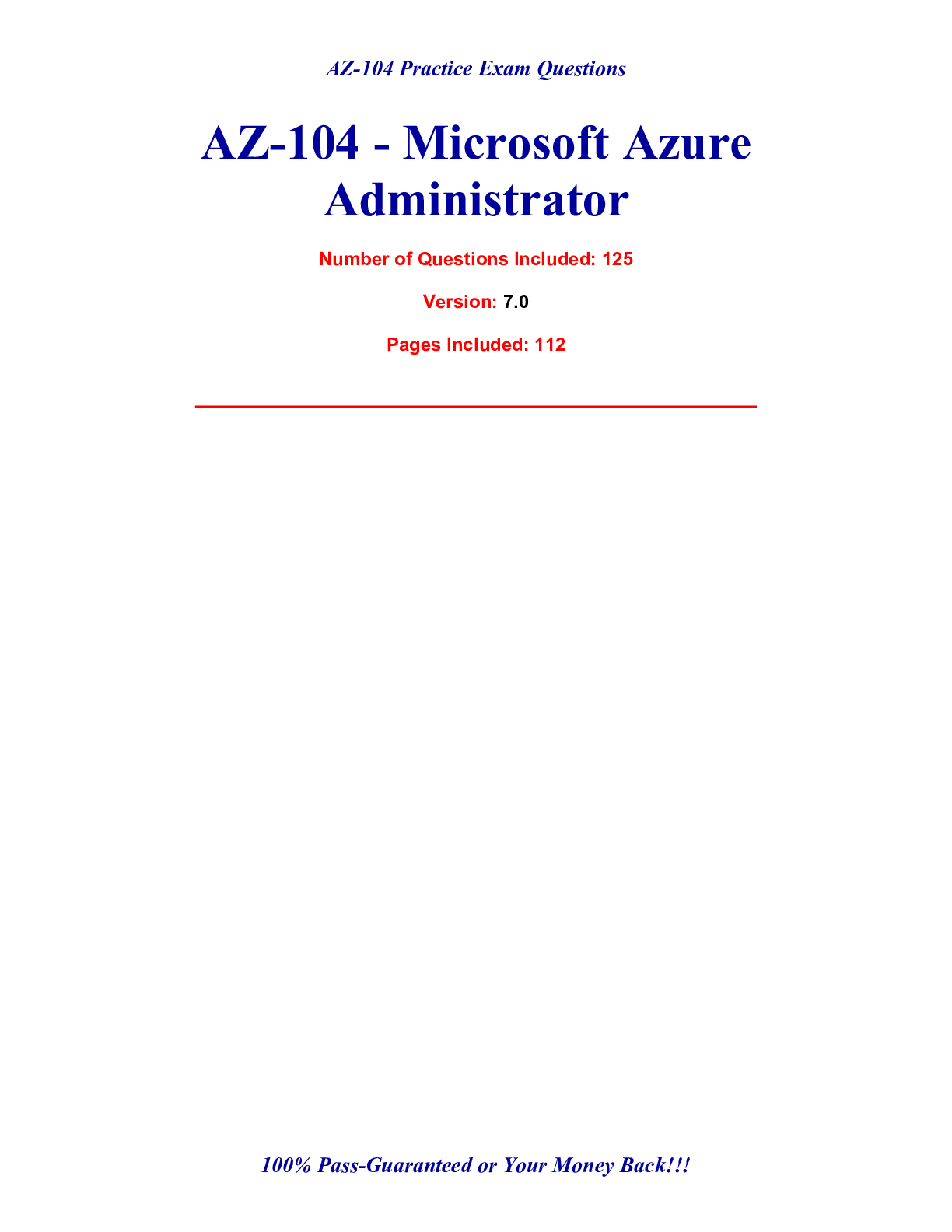
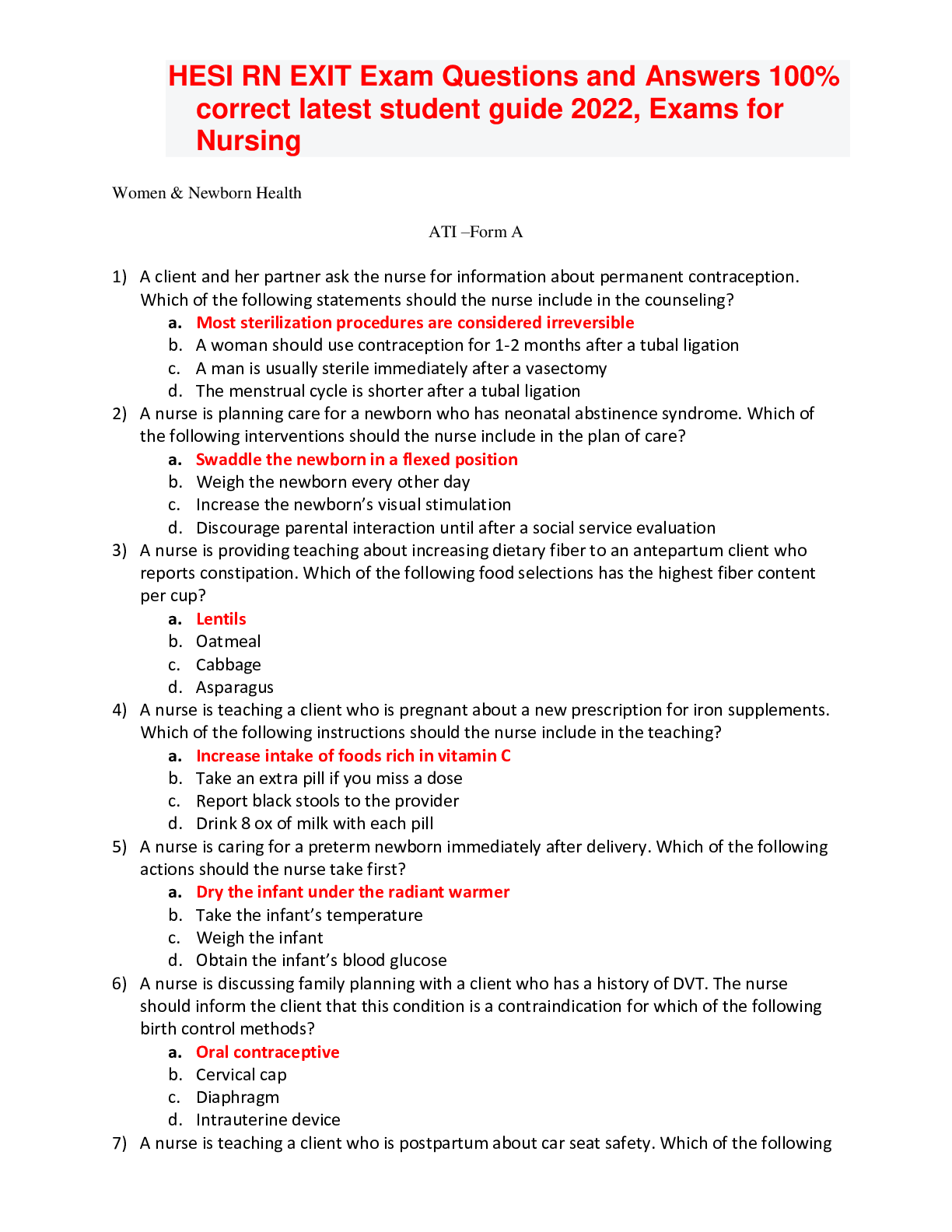

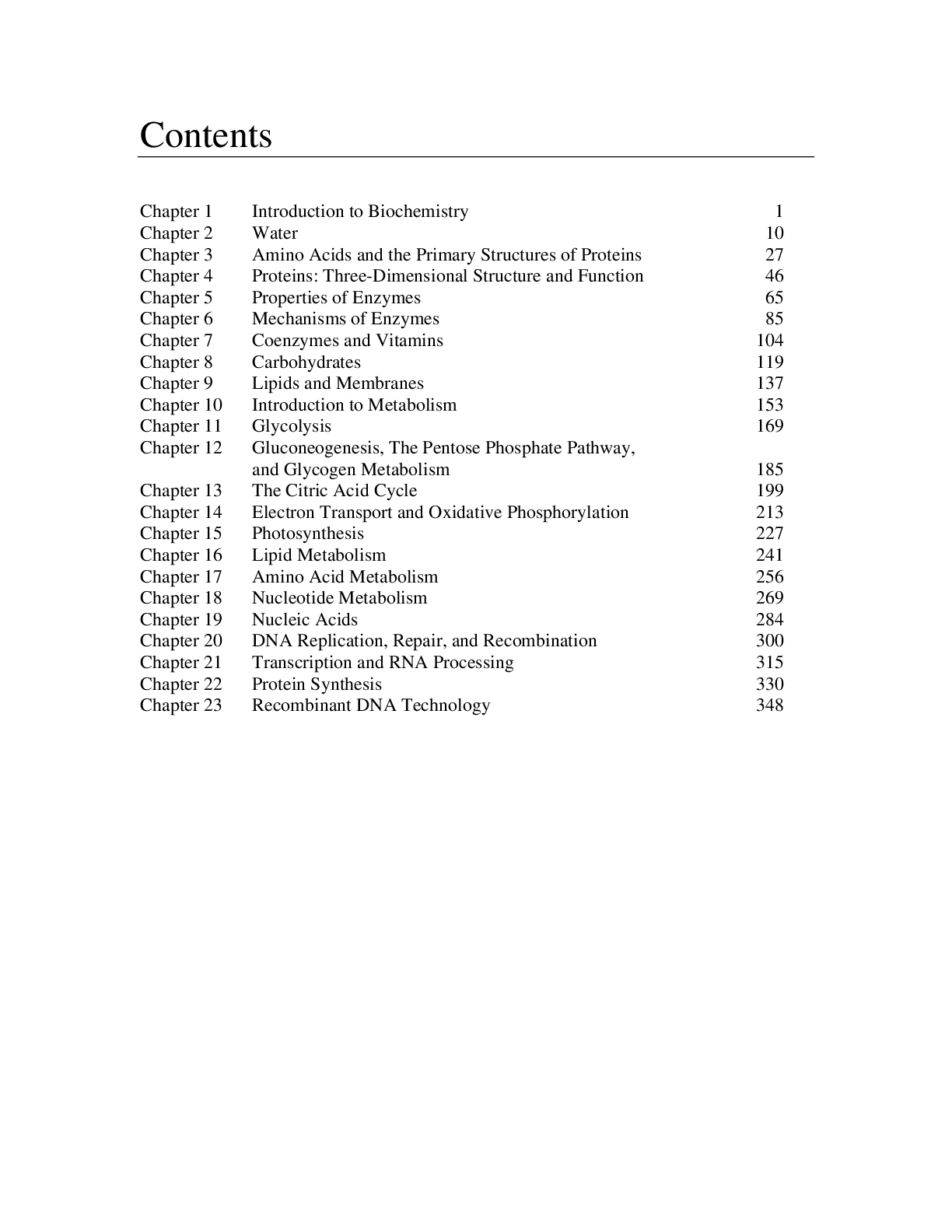
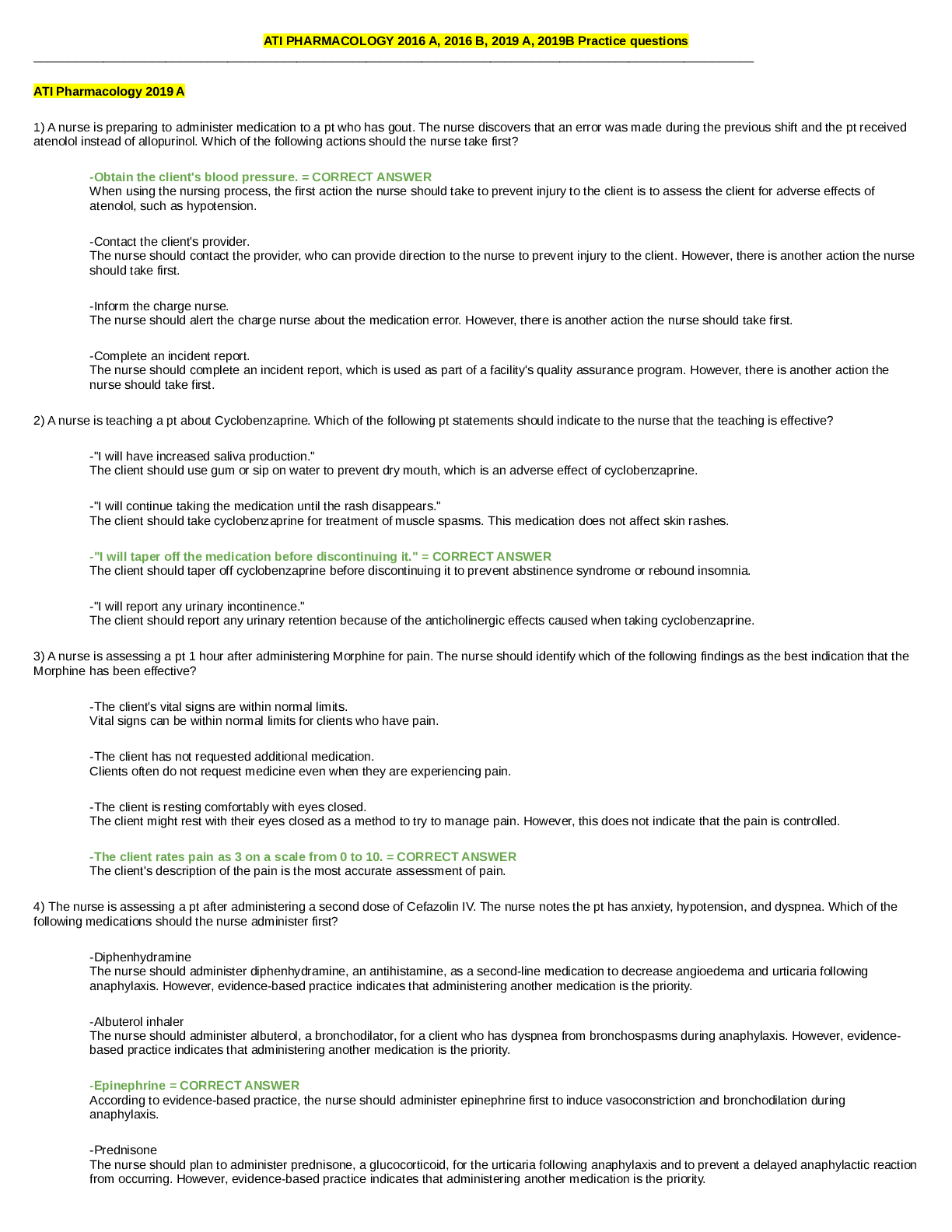
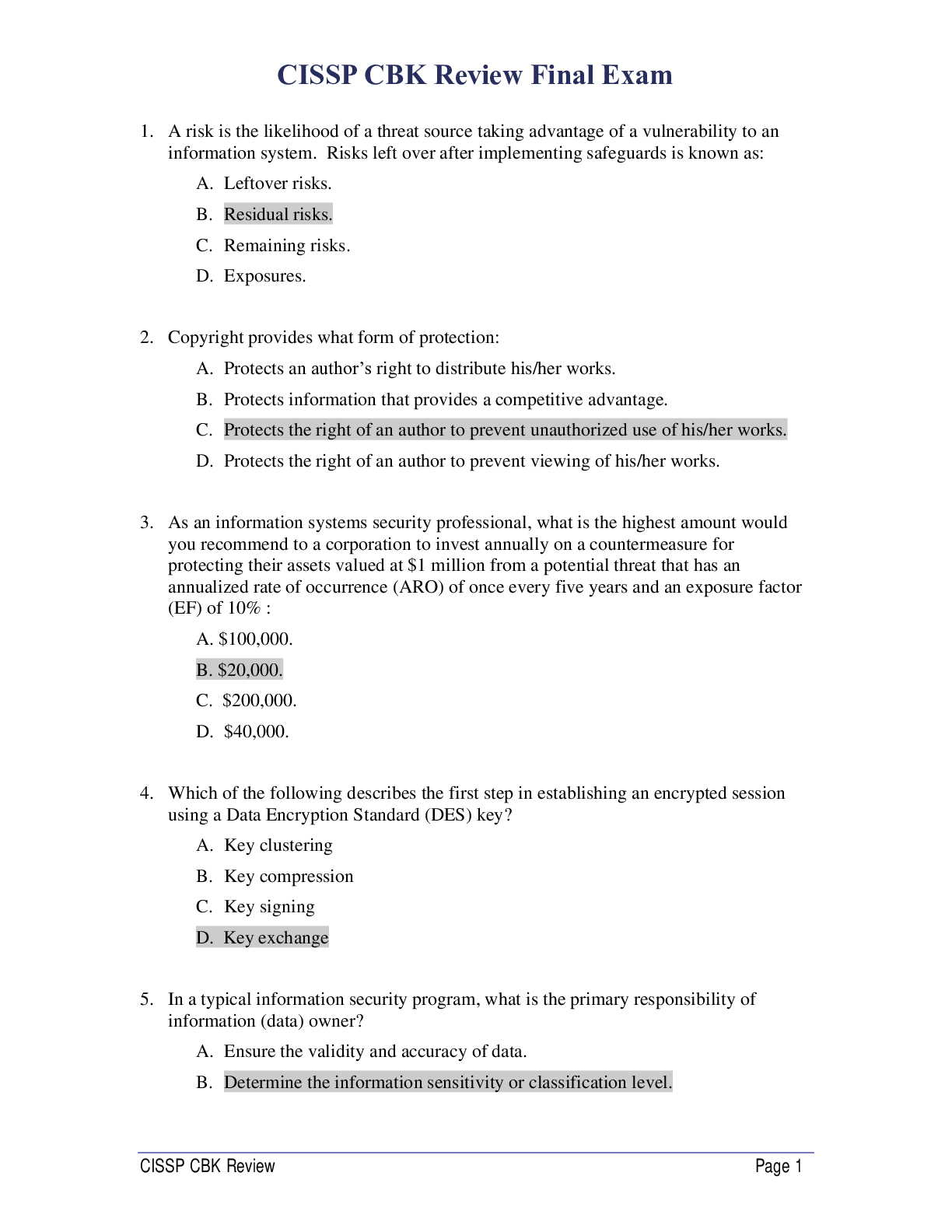
.png)
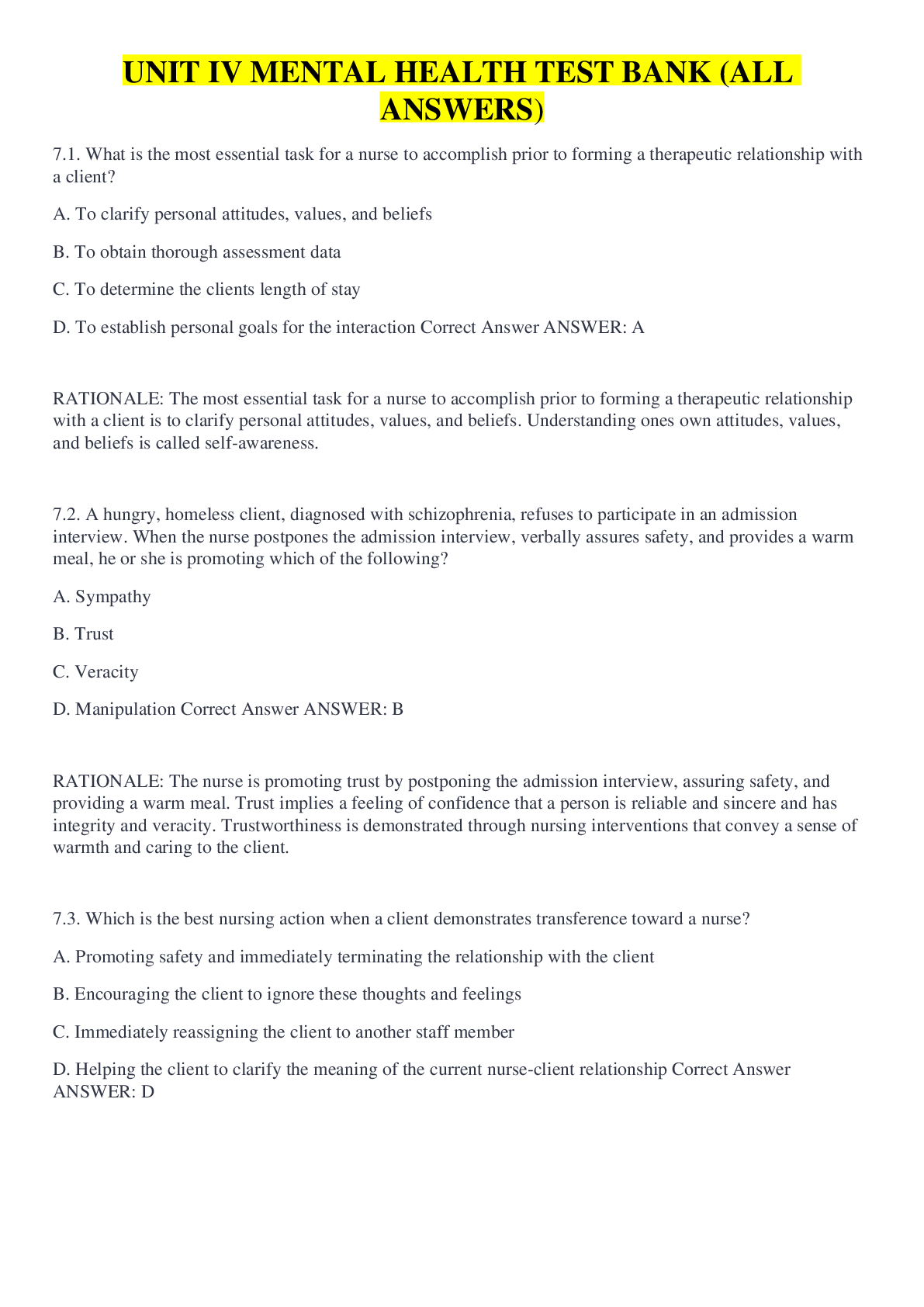



.png)

.png)

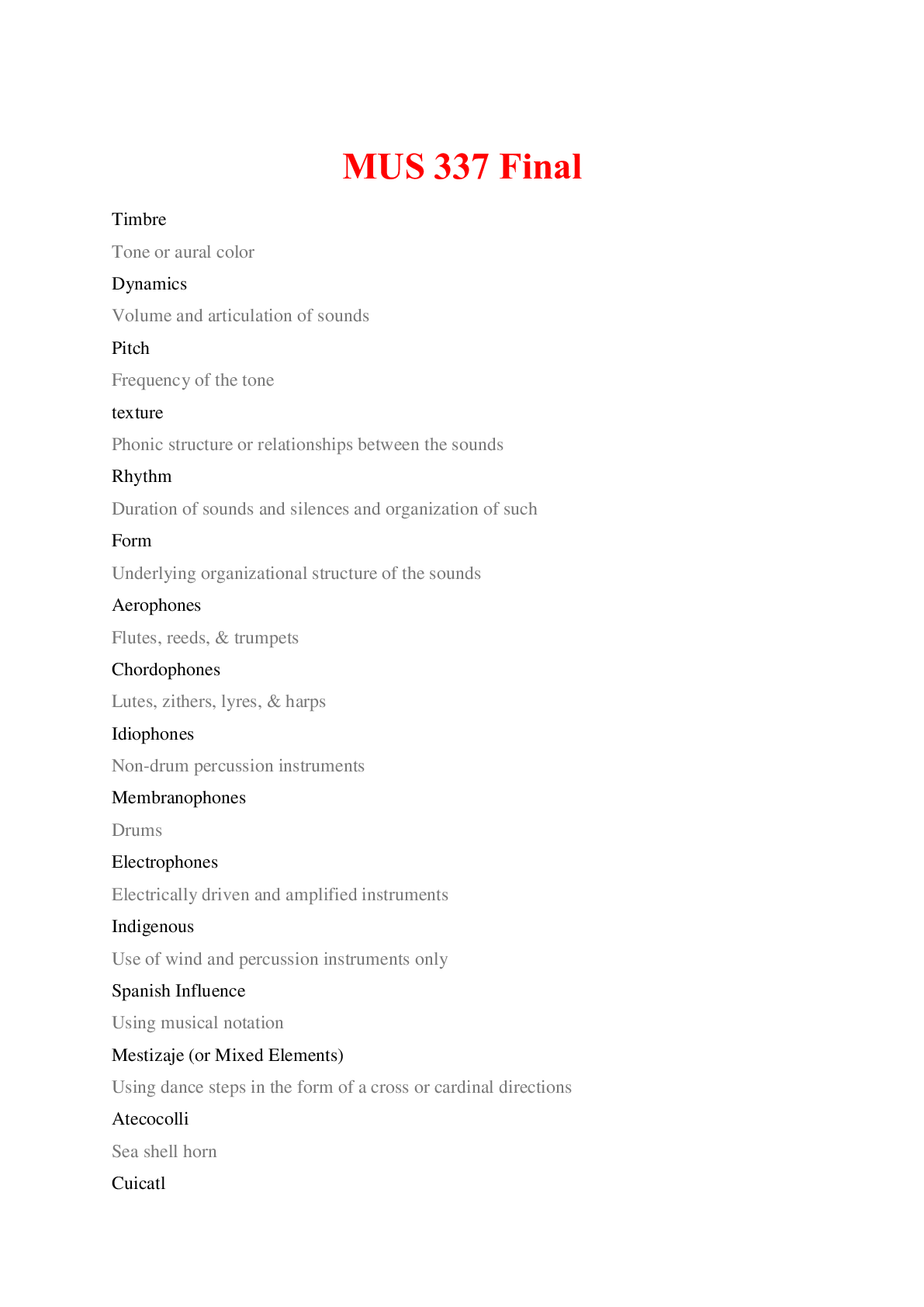

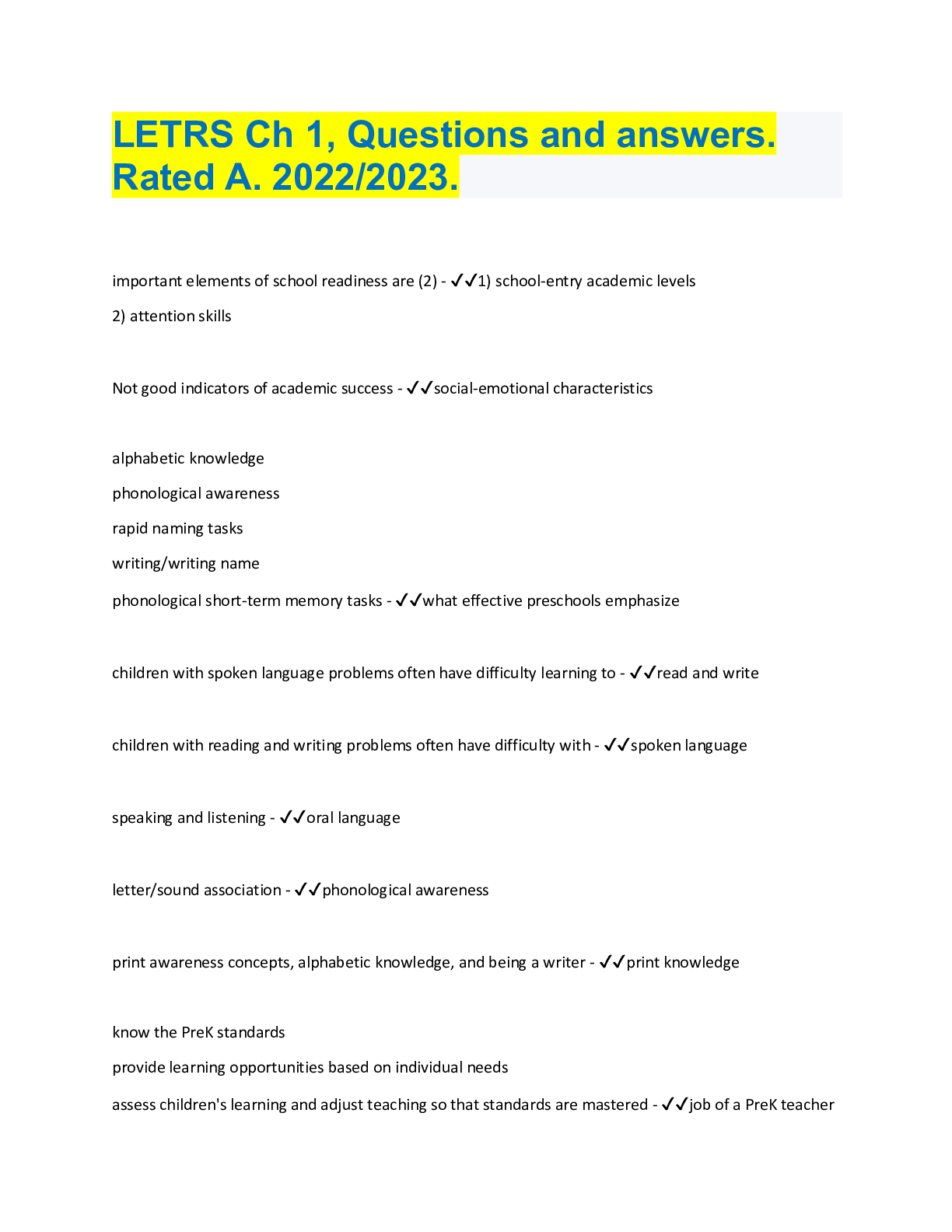
.png)

